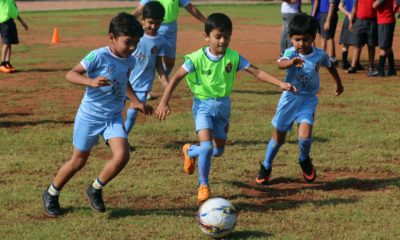Physical literacy is the development of fundamental movement and sport skills. These allow children to move confidently and competently in a wide range of physical activity and sport situations. Physical literacy also includes the ability to ‘read’ what’s going on in particular situations and reacting appropriately.
For complete physical literacy, children should learn movement and sport skills in four basic sport environments:
- On the ground – the basis of most games, sports, dances and physical activities
- In the water – the basis of all aquatic activities
- On the snow and ice – the basis of all winter sliding activities
- In the air – the basis for gymnastics, diving and other aerial activities.
Failure to develop physical literacy puts children at a great disadvantage when it comes to full engagement in physical activity and sport. Developing physical literacy in all children requires a combined effort from parents, guardians, teachers and sport coaches. Also it’s critical that professionals involved in the development of children have an understanding of what is meant by physical literacy and how it can be developed.
During this period of development, it’s important to remember that children aren’t just miniature adults. Although children mature and learn at different rates, almost all children learn fundamental movement skills in the same sequence and phases. For almost every skill, children need to pass through a series of developmental stages. Few can skip a particular stage and still learn the skill. Although, some may pass through a developmental stage within a very short space of time.
Therefore, the goal for parents should be to move to the next version of the skill they’re learning rather than pushing them to perform the skill as an adult would. Professionals working with children also need to be familiar with the developmental stages of learning the skill





















